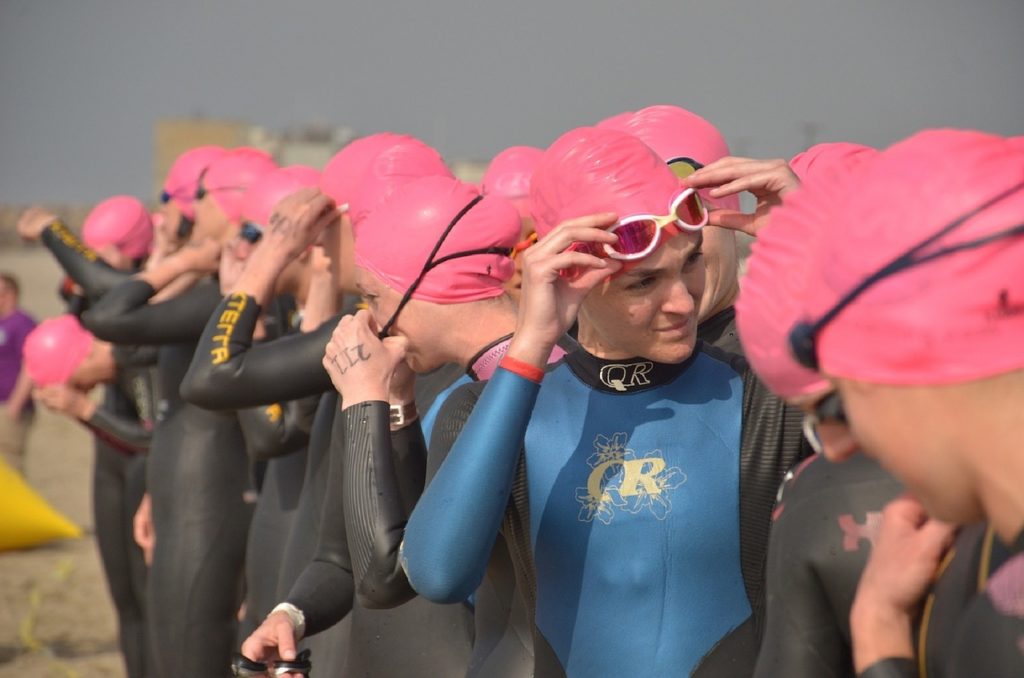- Calls to this hotline are currently being directed to Within Health or Eating Disorder Solutions
- Representatives are standing by 24/7 to help answer your questions
- All calls are confidential and HIPAA compliant
- There is no obligation or cost to call
- Eating Disorder Hope does not receive any commissions or fees dependent upon which provider you select
- Additional treatment providers are located on our directory or samhsa.gov
Athletes, Eating Disorders and Incorporating Exercise into Treatment

Travis Stewart, LPC, NCC – Director of Business Development and Marketing, McCallum Place
Historically, eating disorder treatment programs have avoided incorporating exercise into treatment with the goal of helping patients restore weight more quickly and protect patients who may abuse exercise as a core feature of their eating disorder behaviors.
For athletes, this could become a significant obstacle to seeking treatment. In fact, many athletes were encouraged to quit participation in their sport in order to achieve full recovery, and they may have felt they had to choose between genuine love for their sport and treatment for an eating disorder.
Recent studies are showing that there may be another way to address the issue of exercise in a treatment setting and, especially for athletes with eating disorders, a way to recover from an eating disorder AND return to the sport which they love.
In the December 2018 issue of the Journal of Clinical Sport Psychology the article Strength and Power Improvements in Athlete and Non-Athletes During Intensive Eating Disorder Treatment (Laura K. Fewell, Riley Nickols, Amanda Schlitzer Tierney, and Cheri Levinson) address this issue.
It is the first study to examine measures of strength in athletes in treatment and “indicates the need to address the psychological mindset around physical activity using exercise education as part of a comprehensive program.”
The study included 21 male and female athletes and 36 male and female non-athletes where were in either a residential or partial hospital treatment with The Victory Program at McCallum Place. Once the participants were medically stable, they were assessed for physical strength and conditioning through a variety of measures including:
- Body Mass Index (BMI)
- Maximal Oxygen Consumption (V02max)
- Vertical jump
- Grip Strength
- Push-ups
These were measured both at admission and discharge.
In addition to participating in traditional treatment activities such as individual, family and group therapy, nutrition and education groups, the participants worked with a certified strength and conditioning coach in a variety of settings that were deliberately selected to “maintain a safe and non-judgemental fitness environment (only after being cleared by a physician and the treatment team).
Additionally, “sensitivity was given to potential challenges and triggers that may occur with exposure to fitness environments,” and support was given by the staff to assist patients in developing a more balanced relationship to fitness.
Another aspect of the treatment program included education for the patients on a number of critical topics, including:
- How to engage fitness in a healthy and balanced manner
- Tuning into individual body cues
- Mental skills training for sports
- Proper sport nutrition
- The importance of rest and recovery days
“The program encouraged patients to develop greater respect toward their bodies while improving awareness to the body’s needs through holistic self-care and the use of proper form, function, and biodynamics when exercising” while also including therapy for reducing judgments and comparison.
Outcomes
Many individuals and athletes believe that if only they lose weight, they will improve their sports performance by getting faster, stronger and thinner. These beliefs are often central to the development of an eating disorder in the sports context.
This study actually found that despite an increase in BMI patients “demonstrated an increase in strength by performing significantly more push-ups and stronger hand-grip at discharge compared to admission. V02 did, and vertical leap did not change significantly but may have been affected by the relatively short stays in treatment and mild exercise program.
The authors of the study believe that by appropriately incorporating exercise into treatment while under the supervision of a qualified treatment team, patients may experience increased motivation for recovery, especially among athletes with eating disorders. Specifically, they write that the strength gains could “facilitate improved confidence in athlete patients’ meal plans, acceptance of suggested goal weight, and adherence to fitness recommendations.”
Treatment Recommendations

These treatment recommendations include the recognition that medical stability and nutritional and behavioral compliance must be established before participation in exercise is approved.
Other factors which are considered include:
- Level of care, vital signs, lab results
- Fitness ability
- Achievement of weekly weight gain goals
- Commitment to treatment
- Consistency in following fitness parameters
- Openness to being mindful and present during exercise
- Willingness to listen and respond to body cues, pain or discomfort
Conclusion
The study concluded that “specialized exercise” programs used in a treatment setting with appropriate oversight and supervision “were effective to either increase or prevent reduction of strength” in patients. It went on to say that treatment centers “have the responsibility to address exercise pathology [such as obsessive/compulsive exercise, lying about exercise and injuries due to over-exercise] and to develop skills that support balanced exercise.”
It continued with “Trained staff who are competent in treating [eating disorders] and who can incorporate fitness appropriately are vital to address the nuanced needs of athletes and compulsive exercise” while in a treatment setting.
To receive a free copy of the full article, email Travis Stewart (tstewart@mccallumplace.com), Director of Business Development and Marketing for McCallum Place.
About the Sponsor:
McCallum Place is a nationally recognized eating disorder treatment center where professionals can help guide you through the process of treatment and recovery every step of the way.
About the Author:
Travis Stewart, LPC, NCC, MATS – Director of Marketing & Business Development at McCallum Place Eating Disorder Centers
Travis Stewart, LPC, NCC, MATS is the Director of Marketing & Business Development at McCallum Place Eating Disorder Centers. He has worked in the field of eating disorders since 2003 in both clinical and marketing roles at every level of care. He brings a unique blend of clinical expertise and communication skills to his role with McCallum Place. He is passionate about connecting people to resources and experiences that are transformative and healing.
Travis graduated from the University of Nebraska in 1991 with a degree in advertising and immediately began working with the international ministry of The Navigators, mentoring students. After 8 years, his desire to better understand how people change and heal led to obtaining a Master of Arts in Counseling (2001) and a Master of Arts in Theological Studies (2003) from Covenant Seminary in St. Louis, Missouri where he now lives with his family.
The opinions and views of our guest contributors are shared to provide a broad perspective of eating disorders. These are not necessarily the views of Eating Disorder Hope but an effort to offer a discussion of various issues by different concerned individuals.
We at Eating Disorder Hope understand that eating disorders result from a combination of environmental and genetic factors. If you or a loved one are suffering from an eating disorder, please know that there is hope for you, and seek immediate professional help.
Published on March 27, 2019.
Reviewed & Approved on April 12, 2024, by Baxter Ekern, MBA
Published on EatingDisorderHope.com


